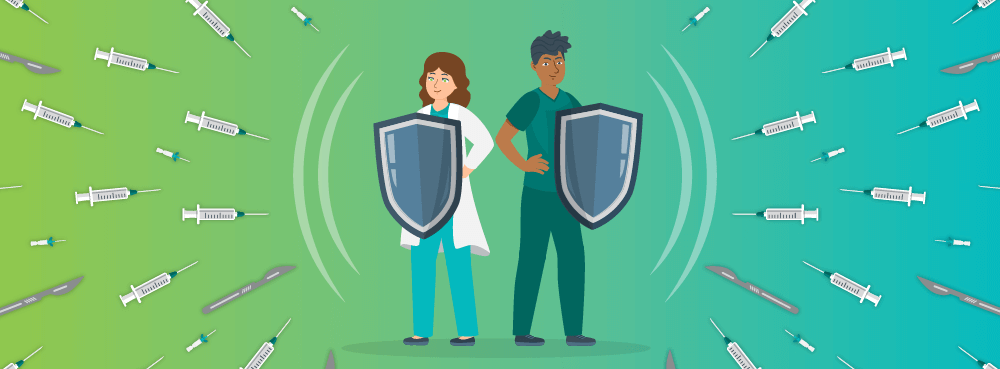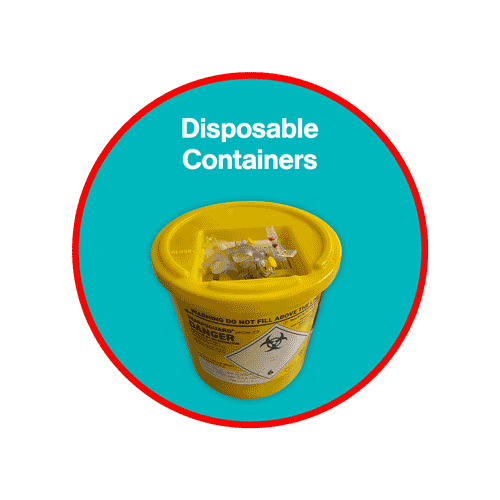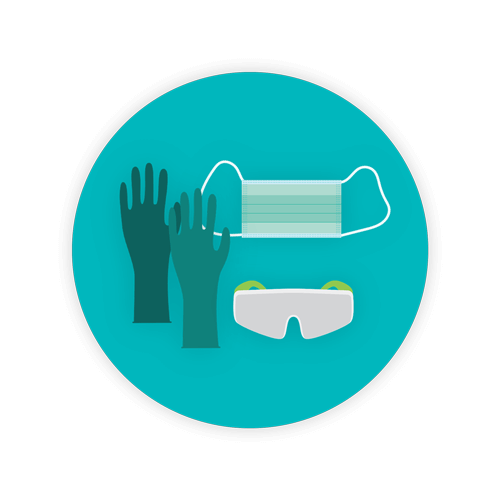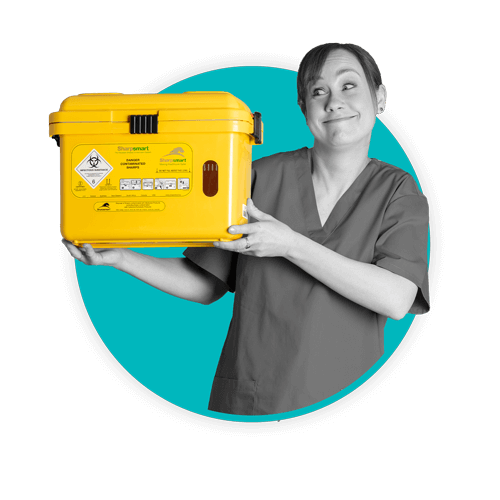How to Protect Healthcare Workers From Sharps Injuries

With 100,000 needlestick injuries occurring across the NHS each year and a high amount that go unreported, it’s more important than ever that action is taken in health and care facilities to protect healthcare workers from sharps injuries.
The Royal College of Nursing (RCN) recently released a sharps safety publication: “Guidance for the prevention and management of sharps injuries in health and social care settings”, which is a must-read for anyone looking to protect healthcare workers from the risks of sharps injuries. Part of the RCN’s sharps safety guide mentions an effective framework for protecting healthcare workers from the risks associated with sharps and related equipment; the hierarchy of controls.
In this blog, we’ll see how the hierarchy of controls can be applied to sharps safety.
TOPICS WE WILL COVER:
1 / What is the hierarchy of controls?
2 / Applying the hierarchy of controls to sharps safety
3 / The Royal College of Nursing’s sharps safety guidance
4 / How to protect healthcare workers from sharps injuries
What Is The Hierarchy of Controls?
The hierarchy of controls is a framework that’s been designed to help employers and employees identify and implement the most effective ways to control workplace hazards and keep healthcare workers safe. Commonly used by those working in the field of occupational health and safety, the hierarchy of controls is made up of five levels:
- Elimination or substitution – Eliminate unnecessary injections and use safer alternatives to sharps-related equipment.
- Engineering controls – Safer needle devices and sharps containers.
- Administrative controls – Introducing safety policies and training programmes.
- Work practice controls – Changing staff behaviours and introducing standard precautions.
- PPE – Protecting healthcare workers with personal protective equipment.
Applying the Hierarchy of Controls to Sharps Safety
To minimise risk, a thorough risk assessment must be conducted to identify what hazardous sharps equipment is being used and where the risks are highest. If certain equipment can’t be removed, the hierarchy of controls framework can be used to implement controls to reduce potential dangers. It may even be necessary to use a combination of measures to limit the risk of injury from sharps or sharps-related equipment to keep healthcare workers as safe as possible. The hierarchy of controls suggests that elimination is the most effective method of preventing injury but eliminating all sharps from health and care settings isn’t a realistic option at the present time. Despite that, steps can still be taken to protect healthcare workers from harm. Let’s look at each control measure from most to least effective and how they can be applied to sharps safety:
Elimination or substitution
Elimination is the most effective way to control sharps injuries and whilst it isn’t always possible to remove sharps altogether, eliminating unnecessary injections can be an effective start. Substitution is a close second to elimination, swapping out sharps or sharps-related equipment for safer alternatives. Examples of substitution include replacing disposable sharps containers which are easily punctured and often overfilled with ISO-compliant reusable sharps containers.
Engineering controls
Engineering controls can be used to isolate or remove a hazard from a workplace and are built into the design of any equipment being used. Examples of this measure include safety-engineered devices such as self-sheathing needles and ISO-compliant sharps containers that have safety features such as overfill protection and restricted hand access. Good lighting, adequate space and point-of-care apparatus also fall under this measure for reducing the risk of sharps injury.
Administrative controls
Administrative controls include safety policies, procedures and training programmes that can be introduced into the workplace with the aim of limiting exposure to sharps injuries. A sharps injury prevention committee can also be added to the Health and Safety team to help with sharps injury prevention as well as treatment, aftercare and follow-up procedures such as vaccination programmes should an injury occur. Incident reporting should be blameless and as straightforward as possible with the responsibility to report an incident clearly understood. Examples of administrative controls include policies on the proper disposal of sharps and staff training on the proper use of safety-engineered devices. Additional measures like designated sharps disposal areas and educational material on sharps safety can also be used to reduce risks.
Work practice controls
Work practice controls can be introduced through standard operating procedures and training, to change the behaviours of healthcare workers to reduce their exposure to sharps-related hazards. Examples include proper handling and disposal of sharps, establishing behaviours such as no needle recapping, correctly assembling sharps containers, placing containers at eye level and within reach, and exchanging sharps containers before it’s too late. Regular monitoring and reporting of sharps injuries and strict adherence to the established protocols and policies on sharps safety are also crucial for reducing risk.

Personal protective equipment (PPE)
The least effective measure in the hierarchy of controls is the use of personal protective equipment. When used properly, PPE can protect workers from hazards such as exposure to blood or bodily fluids but despite being important, PPE alone won’t prevent needlestick injuries. Examples of personal protective equipment include gloves, gowns, face shields, masks and eye goggles.
The Royal College of Nursing’s Sharps Safety Guidance
The hierarchy of controls is a valuable tool that can be used to identify and implement the most effective measures for preventing and reducing sharps injuries in all health and care settings. This framework can be specifically applied to protect and safeguard healthcare workers. Anyone involved in the use and disposal of sharps or the management of sharps injuries will benefit greatly from the Royal College of Nursing’s “Guidance for the prevention and management of sharps injuries in health and social care settings”.
How To Protect Healthcare Workers From Sharps Injuries

Sharpsmart has been making healthcare safer in the UK for over 20 years and we set the ISO standard for reusable sharps containers. Our safety-engineered devices have been proven to reduce sharps injuries by up to 87% and always arrive sanitised and pre-assembled. We also provide much more than just reusable sharps waste containers, our inside-the-four-walls approach and optimised waste management solutions ensure that containers are placed in the right places and staff are educated and trained on best practices with point-of-use disposal.
Contact us today to keep healthcare workers in your facility protected from sharps injuries.
